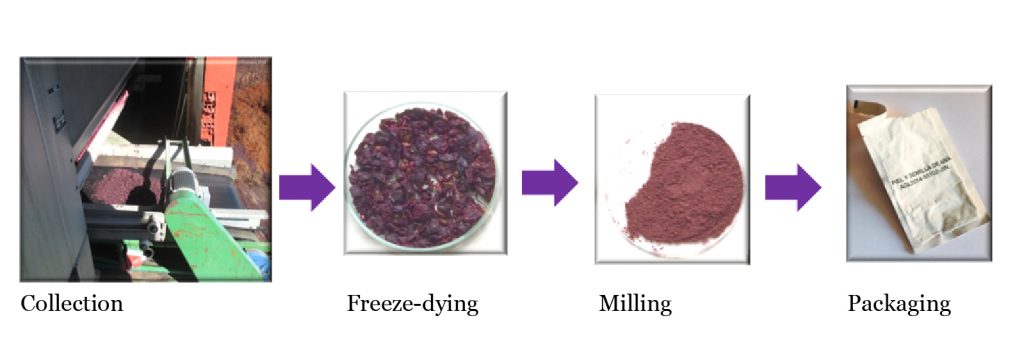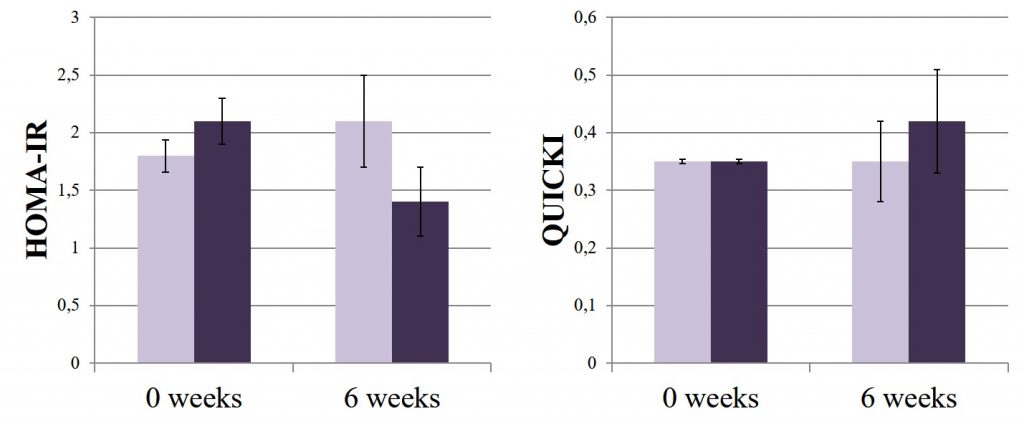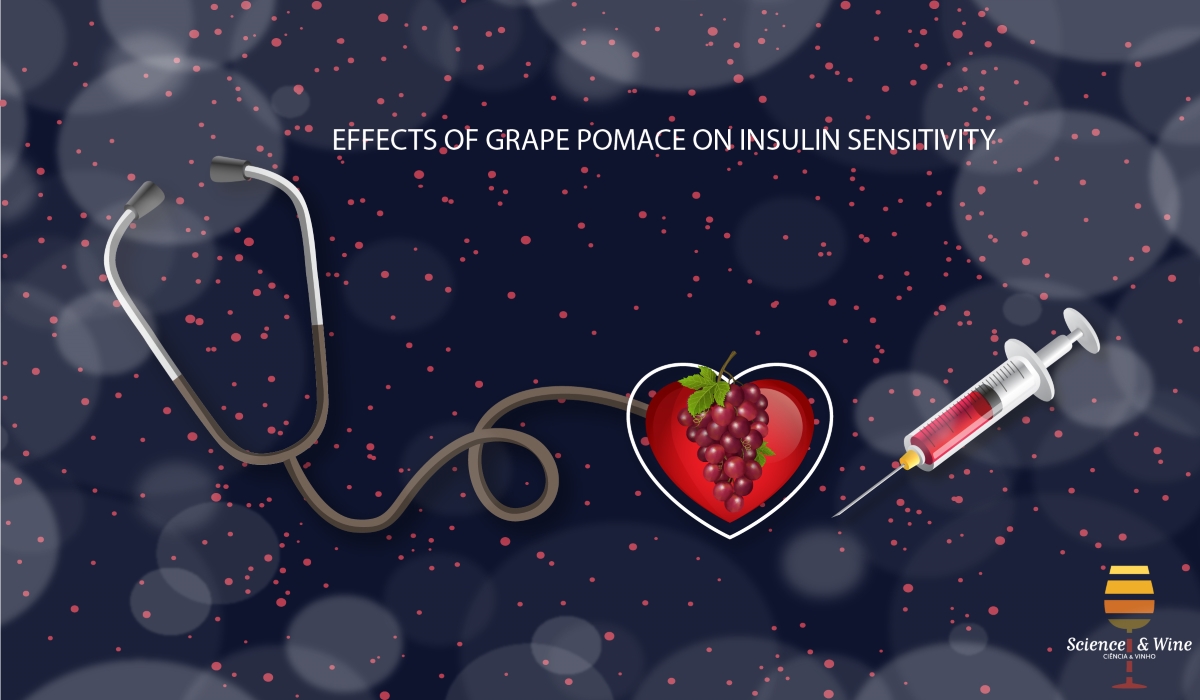By Jara Pérez-Jiménez
Grape pomace is the main byproduct originated during wine production. It is constituted by a mixture of peels, seeds and remaining pulps and it represents about a 30% of grapes used for wine production. The disposal of this material is mostly a problem for wineries, which commonly pay for their removal. Some uses previously suggested for wine pomace are low benefit, e.g., animal nutrition, while other ones require sophisticated systems, such as the preparation of grape seed extracts.
However, grape pomace itself is a relevant source of bioactive compounds. Indeed, this material may be classified as antioxidant dietary fibre [1], i.e., natural materials which present a very high content in dietary fibre and phenolic compounds, being them either free in the food matrix [2] or associated with dietary fibre [3]. The latter fraction corresponds to the so-called non-extractable polyphenols, with increasing interest in nutrition and health [4], being the major fraction of grape pomace polyphenols [3].
Nevertheless, the potential uses of grape pomace as whole matter -only subjected to drying and milling- in nutrition and health remain mostly to be explored. In this way, we previously reported that supplementation with grape antioxidant dietary fibre improved lipid profile in hypercholesterolemic subjects [5]. Similarly, other researchers showed that grape pomace improved blood pressure and glycaemia in male subjects with at least one cardiometabolic alteration [6].
In our last study, we decided to focus on Metabolic Syndrome, a cluster of risk factors predisposing to type 2 diabetes and cardiovascular diseases, and with increasing prevalence in developed countries [7]. Among the underlying mechanisms of Metabolic Syndrome, insulin resistance is a key one, so strategies aimed to ameliorate this parameter may have a potential health impact. Indeed, several animal studies with grape seed extracts have shown beneficial effects in the modulation of insulin resistance [8, 9], but we wanted to perform a clinical trial on the effect of whole grape pomace.
Grape pomace from Tempranillo cultivar was kindly provided by Roquesan Wineries, in Spain. It was freshly collected, freeze-dried, milled and packed in 8g envelopes, as shown in Figure 1. The clinical trial was conducted with subjects who exhibited overweight/obesity plus at least one additional factor of Metabolic Syndrome (hyperglycemia, hypertension, hypertriglyceridemia or low HDL cholesterol); the mean number of Metabolic Syndrome risk factors among the subjects was 2.8. A total of 49 subjects participated in the study and they consumed a daily dose of the product for 6 weeks, without altering their usual dietary habits. Additionally, there was a 6 weeks control period, where subjects had the same follow-up that during supplementation, in order to test possible modifications due to the participation in the study (it was not possible to find an appropriate placebo). Both periods were separated by 4 weeks and, since it was a cross-over study, subjects were randomly assigned into two arms, one starting with grape pomace supplementation and the other one starting with the control period. Blood samples were collected at the beginning and at the end of each period. And half of the subjects were subjected to an Oral Glucose Tolerance Test (oral dose or 75 g of glucose) before and after the supplementation period.

Several cardiometabolic markers were evaluated in the biological samples; also, blood pressure and anthropometry were collected during each visit. There was no modification in most of the parameters measured (as expected, intestinal movements improved after supplementation, as consequence of the high dietary fiber content of grape pomace), but relevant results were obtained regarding insulin metabolism. In particular, there was a significant decrease in fasting insulinaemia after grape pomace supplementation (from 8.5 + 4 to 5.5 + 4.5 µU/mL), without modification in fasting glucose levels. Thus, grape pomace supplementation caused an increase in insulin sensitivity (as measured by QUICKI index, quantitative insulin sensitivity check index) and a decrease in insulin resistance (as measured by HOMA index, homeostatic model assessment); these results are shown in Figure 2. Moreover, a non-significant tendency towards an improvement in postprandial insulin was observed. Overall, these effects seemed to be stronger in subjects with higher basal insulin values.

Therefore, our clinical trial showed that daily supplementation with a dose (8 g suspended in water) easily included in a common diet may have beneficial effects in insulin resistance. The study was recently published in a recognized scientific journal [10]. Currently, we are evaluating potential underlying mechanisms in the effects observed, as well as the potential reasons explaining why not all subjects responded to the treatment, i.e., differences between responders and non-responders. Further studies should be performed in order to confirm the results we obtained. But we consider that this clinical trial, together with previous research on the use of grape pomace, highlights how this by-product currently neglected should be considered as a rich source of bioactive compounds with several applications in food industry (preservative, ingredient, dietary supplement) and other sectors (cosmetics, pharmacy). Therefore, and particularly in a context of increasing interest on circular economy, exploring strategies towards the exploitation of grape pomace may allow to increase the sustainability of wine making.
Those interested in a longer length report can download the working paper at:
https://pubs.rsc.org/en/content/articlelanding/2018/fo/c8fo01323c/unauth#!divAbstract

Jara Pérez-Jiménez completed holds a PhD in Food Science and Technology. She has worked in several research centres and universities in Spain and France focused on the study of food bioactive compounds, in particular polyphenols, using a multidisciplinary approach (studies on food composition, development of an online database, preclinical and clinical trials, observational studies). Currently, she is a Tenured Scientist at the Institute of Food Science, Technology and Nutrition (ICTAN-CSIC) in Madrid. She is co-author of more than 60 papers in international scientific journals (> 3,800 citations, h-index: 30). She is also co-inventor a patent transferred to a national company, has been coeditor of a book published by the Royal Society of Chemistry (United Kingdom) has been invited speaker in universities form United Kingdom, France, Spain, Mexico and Chile. Additionally, she was a member of the Experts Committee on Human Nutrition of the French Agency of Food Safety in 2015-18. Finally, she regularly develops dissemination activities, for which she has received several awards.
Several other researchers from ICTAN-CSIC participated in this study: Daniel Martínez-Maqueda, Angélica Gallego-Narbón, Belén Zapatera, Pilar Vaquero and Fulgencio Saura- Calixto.
References:
- Saura-Calixto F (1998) Antioxidant dietary fiber product: A new concept and a potential food ingredient. J. Agric. Food Chem. 46: 4303-4306
- Kammerer D, Claus, A, Carle, R, Schieber, A (2004) Polyphenol screening of pomace from red and white grape varieties (Vitis vinifera L.) by HPLC-DAD-MS/MS. J. Agric. Food Chem. 52: 4360-4367
- Pérez-Ramírez IF, Reynoso-Camacho, R, Saura-Calixto, F, Pérez-Jiménez, J (2018) Comprehensive Characterization of Extractable and Nonextractable Phenolic Compounds by High-Performance Liquid Chromatography-Electrospray Ionization-Quadrupole Time-of-Flight of a Grape/Pomegranate Pomace Dietary Supplement. J. Agric. Food Chem. 66: 661-673
- Pérez-Jiménez J, Díaz-Rubio, ME, Saura-Calixto, F (2013) Non-extractable polyphenols, a major dietary antioxidant: Occurrence, metabolic fate and health effects. Nutr Res Rev 26: 118-129
- Pérez-Jiménez J, Serrano, J, Tabernero, M, Arranz, S, Díaz-Rubio, ME, García-Diz, L et al (2008) Effects of grape antioxidant dietary fiber in cardiovascular disease risk factors. Nutr 24: 646-653
- Urquiaga I, D’Acuña, S, Pérez, D, Dicenta, S, Echeverría, G, Rigotti, A et al (2015) Wine grape pomace flour improves blood pressure, fasting glucose and protein damage in humans: A randomized controlled trial. Biological Res. 48:
- Scuteri A, Laurent, S, Cucca, F, Cockcroft, J, Cunha, PG, Mañas, LR et al (2015) Metabolic syndrome across Europe: Different clusters of risk factors. Eur. J. Prev. Cardiol. 22: 486-491
- Castell-Auví A, Cedó, L, Pallarès, V, Blay, MT, Pinent, M, Motilva, MJ et al (2012) Procyanidins modify insulinemia by affecting insulin production and degradation. J. Nutr. Biochem. 23: 1565-1572
- Meeprom A, Sompong, W, Suwannaphet, W, Yibchok-Anun, S, Adisakwattana, S (2011) Grape seed extract supplementation prevents high-fructose diet-induced insulin resistance in rats by improving insulin and adiponectin signalling pathways. Br. J. Nutr. 106: 1173-1181
- Martínez-Maqueda D, Zapatera, B, Gallego-Narbón, A, Vaquero, MP, Saura-Calixto, F, Pérez-Jiménez, J (2018) A 6-week supplementation with grape pomace to subjects at cardiometabolic risk ameliorates insulin sensitivity, without affecting other metabolic syndrome markers. Food Function 9: 6010-6019

